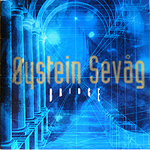This review page is supported in part by the sponsors whose ad banners are displayed below |
 |
 |
To avoid misapprehensions, the far more affordable Hanoverians can’t compete with the Primi otherwise. From isolated disciplines like bass authority or midband saturation to the bigger picture of persuasiveness and realism, the Rondo performs on a markedly lower plateau of scale and finesse.
|
 |
How this implies clear shortcomings became apparent with the spiderwebby cymbal glimmer of Øystein Sevåg’s "Hanging Gardens" from his Bridge album. Whilst the upper registers did exhibit very mild softness compared to the air and tintinnabulation of super-tweeter turf, the silkiness and suchness whereby the Credo Primus handled this band without porosity or greyness was anything but common. Shy of a direct A/B I could merely manage a big thumbs up. The Rondo for example is more porous. The Primus is far closer to the Sehring tweeter which leads a bit on air however as one of its acknowledged strengths.
|
|
Obviously Phonar's rear-mounted treble adjustment affords just a tad more energy if desired. I preferred the neutral setting for most fitting integration. If I were a psychologist, I’d call the Primus a compact box with a Napoleon complex which thinks itself a floorstander. This doesn’t relate to any Bonaparte-ish personality defects. It's merely about output power and bass extension. Those wouldn’t seem out of place even for a quality tower speaker. I frankly can’t think of a competing monitor which on these counts could relegate Phonar to second best.
|
|
|
Yet the Phonar Credo Primus doesn’t merely do big. It’s very strong on being sonorous, full of color and exceptionally non-etchy. It adores voices and acoustic instruments. Friends of natural sound with high pleasure factor ought to audition this speaker particularly if the mission includes adequate bass power from a visually unobtrusive box. The Primus simply wasn’t trained for the final degree of resolution and attack sharpness. Yet this doesn’t extend to any degree of weakness on these counts.
|
 |
This speaker will want a minimum of 40 – 50cm wall distance. It'll also want fast amps with high control and an even balance or possibly even on the light side of neutral like the Audionet or Abacus electronics I ran. If the full loudness potential of the Credo is to be tapped, spare amplifier power will come in handy. These Northern Germans are anything but sensitivity wonders.
|
|
|
|
 |
Psych profile:
- Tonally pleasant, substantial and colourful, with a midrange that's centered slightly lower. The transition of the lower to upper registers is exemplary and fully subservient to seamless homogeneity.
- Very mature and for the genre astonishing bass extension and macro dynamics. To exploit the latter requires very powerful amplification.
- A focus on fluidity over microdynamic adrenaline.
- A slightly mellow treble balance that favors farfield naturalism over an extra dose of come hither energy.
- Good soundstaging as should be expected from the genre.
- Fit and finish are concomitant with the price.
Facts:
- Concept: 2-way bass reflex compact
- Trim options: Black piano gloss, silver, white, macassar, zebrano
- Dimensions and weight: 40 x 24 x 34cm HxWxD, 12kg
- Sensitivity: 85dB (1W/1m)
- Nominal impedance: 8 ohms
- Other: Rear-mounted jumper array for treble voicing
- Warranty: 5 years
- Website
|
|

redaktion @ fairaudio.de
|
 |
 |
 |